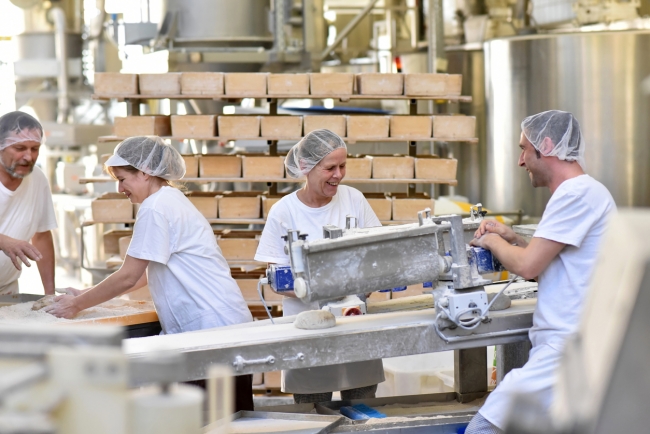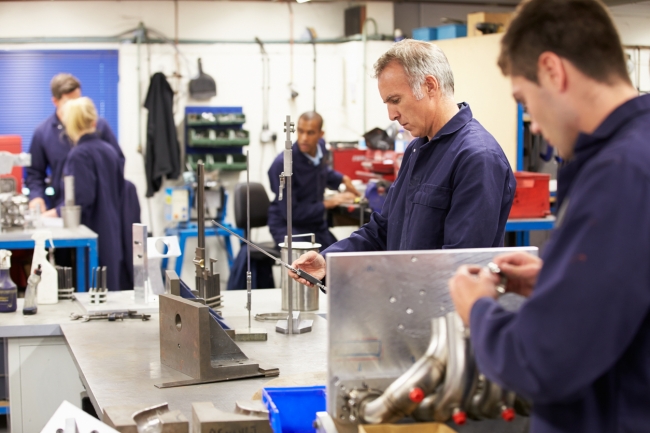4 minute read - 3rd July 2023
UK regions see manufacturing jobs boost but labour challenges remain in new report
The number of jobs in manufacturing has grown in six of the eight English regions along with Wales, highlighting the importance of the sector to the levelling up agenda and providing high skill and better paid jobs across the UK.
According to Make UK, the figures also counter the long-held narrative of inevitable decline in manufacturing employment and show, as is happening in the US, that growing manufacturing jobs and the sector’s share of the economy is a realistic prospect given a supportive policy framework.
The findings come in the Make UK/BDO Regional Manufacturing Outlook Report which provides a comprehensive analysis of the contribution of manufacturing to each English region and devolved Nation. It analyses a number of metrics including industry’s share of regional and national economies, number of jobs and share of regional/national employment, together with sectoral analysis.

The number of jobs in manufacturing has grown in six of eight English regions along with Wales, according to the latest Regional Manufacturing Outlook report / Picture: Getty/iStock
Never miss the latest manufacturing news by signing up to our newsletter here
However, despite the increase in the number of jobs across most English regions, Make UK stressed that substantial labour challenges remain. According to the latest official data, 74,000 vacancies remain unfilled, at a cost in economic output of approximately £6.5bn.
Verity Davidge, director of policy at Make UK, said: “Industry remains critical to the growth of the economy, providing high value, high skill jobs and aiding the process of levelling up. But, if we are to address the current anaemic growth prospects for the sector and the economy overall we need bold measures at national and regional level. This must include both a national industrial strategy which allies with local growth strategies to fit with the priorities and strengths of each region, including infrastructure, innovation and skills in particular.”
Richard Austin, head of manufacturing at BDO, added: “The manufacturing jobs growth we have seen across the last year is testament to the resilience of the sector as a whole. Manufacturing companies across the UK have had to overcome the multiple challenges thrown up by Brexit, shortages in skilled labour, pandemic-related supply chain delays and the huge energy price rises we have seen following the Russian invasion of Ukraine. While everyone is hoping for some respite, the headwinds show no sign of abating. With high inflation and interest rates continuing to rise, manufacturers will need to remain alert, responsive and resilient in the face of any future geopolitical or economic shocks.”

Make UK says the figures also counter the long-held narrative of inevitable decline in manufacturing employment / Picture: Getty/iStock
According to official data, Yorkshire & Humber saw the biggest growth in manufacturing jobs, adding 46,000 jobs in 2022 compared to 2021, bringing the total number to 316,000, more than one in ten (11%) of the region’s workforce. According to Make UK, this is possibly due to the growth of the food and drink sector post pandemic given it accounts for almost a fifth (16.3%) of regional output. The second largest sector in the region is chemicals, which has also performed strongly in recent years, closely followed by basic metals.
The South West saw the second highest increase, a further 28,000 jobs bringing the total to 249,000, 8% of the region’s workforce. This was closely followed by the East of England, adding 27,000 jobs bringing the total to 228,000, 7% of the region’s workforce. The East and West Midlands, together with London and the South East, Wales and Northern Ireland also saw increases in the number of manufacturing jobs.
The report also highlights the importance of manufacturing and jobs to so-called ‘red wall’ areas where the sector occupies a substantially higher than average contribution to the regional economy. The average regional share of manufacturing nationally in the UK is just under 10% (9.8%), whereas in Wales the sector accounts for almost a fifth of the economy (17.3%), whilst it is also substantially above the average as a share of the economy in the East Midlands (16.4%), Yorkshire & Humber (15.4%), North East (15%), West Midlands (14.4%) and the North West (14%).

Despite the increase in the number of jobs across most English regions, Make UK stressed that substantial labour challenges remain / Picture: Getty/iStock
However, as well as highlighting the strengths of manufacturing across regions and nations, the report also shows the challenges which still remain for levelling up and, the implications for policies to promote it. According to the most up to date official data available on regional manufacturing GVA (gross value added), all regions and nations, apart from the West Midlands, had recovered to pre-pandemic levels of output by 2021.
But, while the percentage increases in GVA among the majority of regions and nations were in low single figures, London and the South East had increased its GVA in 2021 compared to pre-pandemic levels by almost a fifth (19%).

